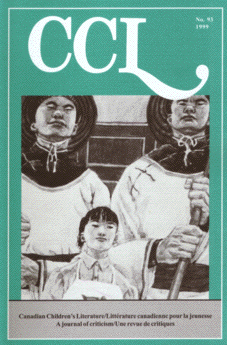Re-Visioning <em>Frankenstein</em>: <em>The Keeper of the Isis Light</em>
Résumé
Résumé: Le roman de Monica Hughes, The Keeper of the Isis Light, partage de nombreuses affinités avec le chef-d'oeuvre de Mary Shelley, Frankenstein. Notamment au plan de l'histoire: dans les deux cas, il s'agit des mésaventures d'un être créé par la science, qui recherche la compagnie de la société et subit un rejet universel pour finir dans l'isolement complet. Toutefois, si le récit de Mary Shelley sous-tend une "theodicée noire," soit un discours sur l'injustice universelle qui produit des soufrances injustes, donc la monstruosité, celui de M. Hughes débouche sur une "theodicée de la vie privée", où la souffrance aboutit à l'approfondissement de soi et au développement moral et psychologique. Summary: As the story of a scientifically produced "creature" who longs for human society, suffers rejection, and then goes into isolation,The Keeper of the Isis Light is remarkably similar to Mary Shelley's Frankenstein, the novel generally credited as the first in the genre and the one that introduced the figure of the alien. Although both novels focus on the development of consciousness and on identity-formation, The Keeper of the Isis Light connects society, individual psychology, and morality in a profoundly different way. The creature's story in Frankenstein is a "black theodicy," a discourse on universal injustice in which unjust suffering makes Victor Frankenstein's creature a true monster. In The Keeper of the Isis Light, however, Hughes critically modifies Shelley's dark theodicy, rewriting its materials to create a "theodicy of the private life," in which suffering leads to psychological and moral growth.Téléchargements
Publié-e
1999-03-01
Numéro
Rubrique
Articles


